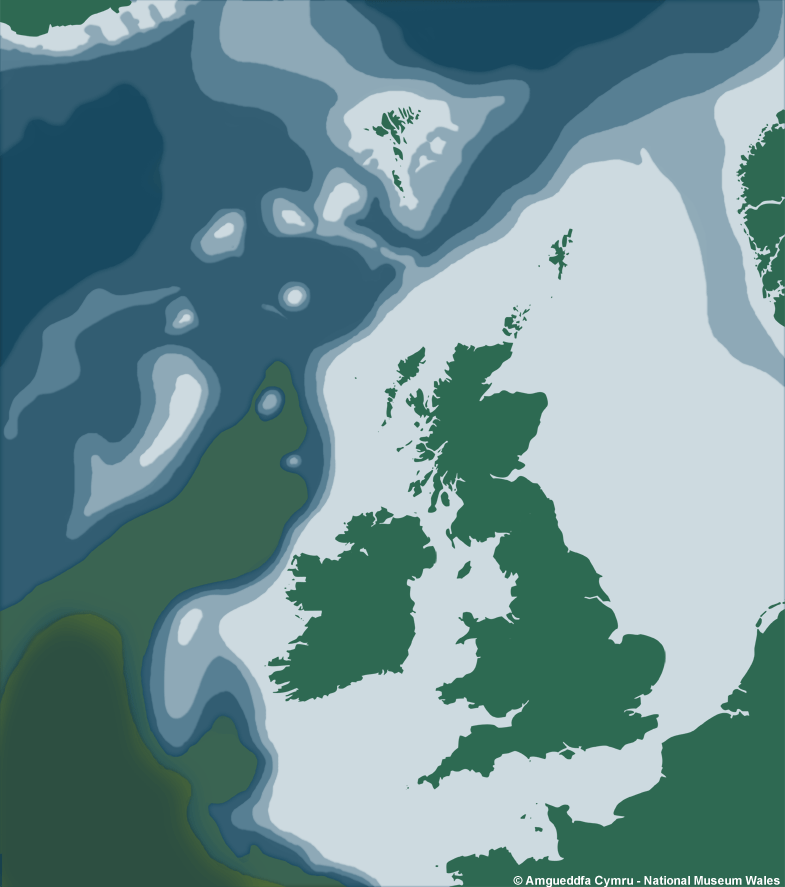Silicula fragilis Jeffreys, 1879
Nuculanoidea : Siliculidae |
| Tebble name: | n/a |
| Smith & Heppell name: | Silicula fragilis Jeffreys, 1879 |
To size:
To 5mm.
Shell Structure:
Thin, fragile.
Equivalve:
Equivalve.
Equilateral:
Inequilateral, beaks situated to the anterior of midline, approximately 30% of total length from anterior end.
Tumidity:
Flattened.
Outline:
Elongate, rounded rectangular: length of shell approximately twice the height; shell gaping anteriorly and posteriorly and along the dorsal margin; antero-dorsal margin short, gently sloping; anterior end well rounded, sometimes with a slight point; postero-dorsal margin very long, slightly concave, slightly sloping, with a sharp dorsal margin - posterior margin junction; posterior end angled, straight and truncated and forming a distinct junction with the ventral margin; ventral margin gently rounded. Umbo narrow, pointed and projecting slightly above the dorsal margin.
Sculpture:
Virtually smooth , with extremely fine, regularly spaced concentric lines.
Margin:
Smooth.
Ligament:
Opisthodetic, narrow curved, angled posteriorly, attached internally to the underside of the beak without a projecting chondrophore or resilifer.
Hinge:
Taxodont: long, broadening away from the umbos. Very long, thin overlapping teeth, usually 4 posterior and 3 anterior.
Periostracum:
Glossy, very pale straw coloured, slightly iridescent, almost transparent.
Colour:
Transparent.
Additional Characters:
Gut loop: The hind-gut forms a rounded loop on both sides of the body.
Distribution & Ecology
Depth Range
Abyssal Rise (2000 - 4000m)
Abyssal Plain (4000m +)

Additional Information & Related Species
Related Species
Nuculanoidea : Siliculidae
References
Listed are literature citing Silicula fragilis Jeffreys, 1879. Reference containing the species Type Description is highlighted.
|
Allen J A & Sanders H L 1973. Studies on deep-sea Protobranchia (Bivalvia); the families Siliculidae and Lametilidae). Bulletin of the Museum of Comparative Zoology, Harvard. 145: 263-310. |
|
Jeffreys J.G. 1879. On the Mollusca procured during the ‘Lightning’ and ‘Porcupine’ Expeditions, 1868-70. (Part II). Proceedings of the Zoological Society of London. 1879: 553-588. |
|
Olabarria C. 2005. Patterns of bathymetric zonation of bivalves in the Porcupine Sea Bight and adjacent abyssal plain, NE Atlantic. Deep-Sea Research I. 52: 15-31. |
Resources
- Conchological Society
of Great Britain & Ireland
Provides resources for understanding, identifying, recording, and conserving molluscs - CLEMAM
Check List of European Marine Mollusca - MarLIN
The Marine Life Information Network for Britain and Ireland (MarLIN) provides information for marine environmental management, protection and education. It is a centre of excellence in spatially based and time-series marine biological information and supports good stewardship in the marine environment. - NBN Gateway
National Biodiversity Network's Gateway. Use it to explore UK biodiversity data, as contributed by participating data providers. - BivAToL
- MarBEF
- Malacological Society
- Unitas Malacologica
- Census of Marine Life
- MarBEF
MarBEF, a network of excellence funded by the European Union and consisting of 94 European marine institutes, is a platform to integrate and disseminate knowledge and expertise on marine biodiversity, with links to researchers, industry, stakeholders and the general public.









